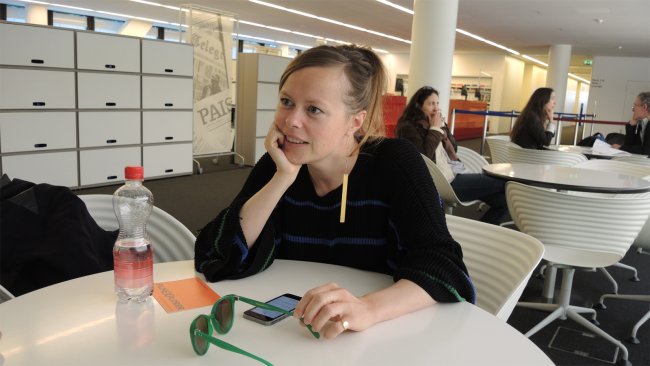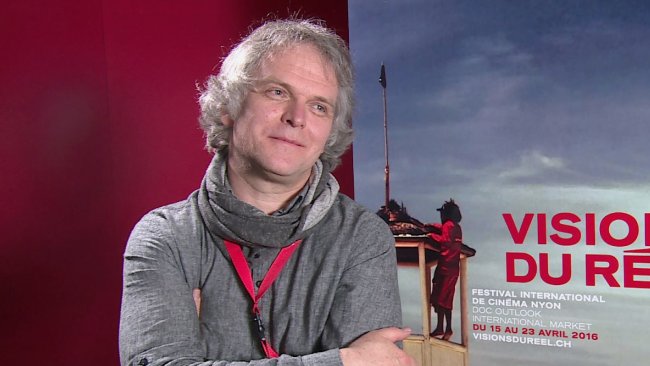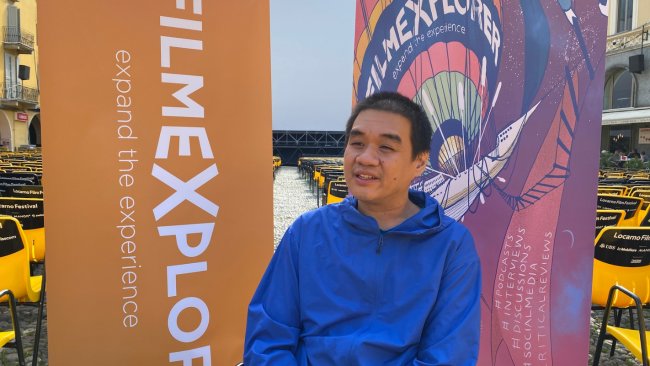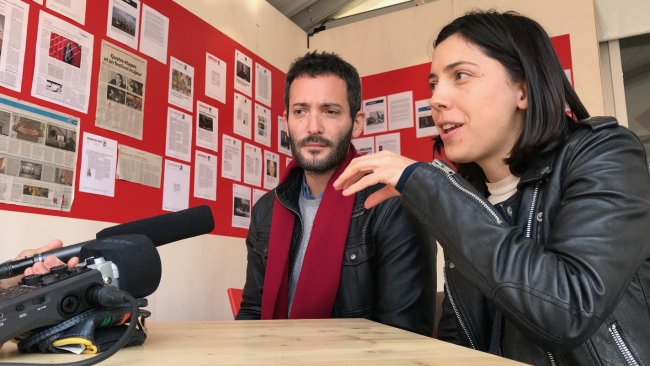Schwesterlein
[…] There is always this light in the dark and that, in a way, has become our signature. It’s important for us to always feel the light coming through in even the darkest night.
[…] We really are interested in working with actors and exploring things in different languages, even American or English, but here, specifically, it was Nina Hoss who inspired us, and we kind of followed this inspiration.
Text: Pamela Jahn
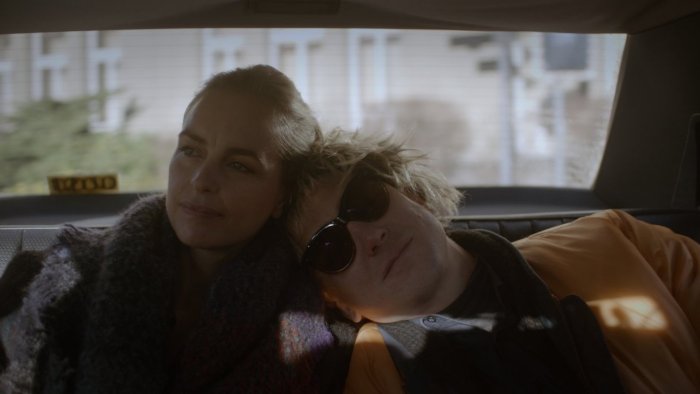
Interview with Stéphanie Chuat and Véronique Reymond
Pamela Jahn (PJ): In your new film, you are dealing with a great tragedy at hand, but the tone is also quite optimistic in places. How did you work out the balance between these two aspects?
Stéphanie Chuat (SC): Balance is the one thing we are always looking for in everything we do, and I think it’s also a reflection of our relationship, the relationship between Véronique and I, because we are like that. So that in the middle of a great tragedy you will notice maybe something humorous or funny. There is always this light in the dark and that, in a way, has become our signature. It’s important for us to always feel the light coming through in even the darkest night.
Véronique Reymond (VR): Also, because when we speak or talk about dark subjects and issues, it’s easy to forget the present, but in the end, it is all about the present, it’s about how you go through these difficult times in your daily life, and the present is life. It is having children or an eccentric and neurotic mother, and to show that was very important to us, because this is all that makes “a life” actually.
PJ: How do you work out the dynamic between the two of you when you are filming? Is one of you more active on set and the other one in the editing room, or how do you work together?
SC: During the writing process for this movie Véronique really was the main force this time, because I actually went through what Nina experiences in the film. My mother was very ill and about to leave me, and I couldn’t be in the process of writing of what I was living through at the time. There are, however, some scenes that are directly taken from what I told Véronique or what she would observe while being around me, but then, on set, we have no separate functions. During the shooting and the editing we work together as one unit.
VR: Yes. It’s very important for us not to decide before who is doing what, because we want to be fresh in front of the actors, in front of the crew and also in front of each other. So, for each scene or shot we are there together, but then maybe one day I go to the actors because I know, today, I have this feeling to work with this actor, with Nina or with Lars, or I feel like I have to say something to the DP or the set design and the makeup. We are always in the movement to keep things fresh – that’s very important – but still, we know each other very well and we know exactly where we are going with this, so that we have a common voice. No matter what one of us does, we always have to go in the same direction.
PJ: How did you manage to get Nina Hoss and Lars Eidinger on board? They are in such high demand these days, both on stage and in front of the camera?
VR: First of all, we wanted to make a movie with non-French speaking actors, and we decided okay, let's focus on our mountains with Swiss expats and boarding school people, and we wanted Nina Hoss. We wanted her to play the headmaster’s wife in a midlife crisis; that was the starting point. We originally met her completely by chance in a shop in Berlin five years ago, but at that moment we were completely in shock, we didn’t even remember her name. It was pretty embarrassing. So, we said hello, we said that we are Swiss directors and that we’re in the process of writing a movie for her. We asked her to go for a coffee and she was open to this. In the end, we left her our number and we thought she would never call back – but she did, and some days later we met up again and we spent three hours talking about the project. It’s important because when you talk about Lars, it’s first Nina, and the more we talked with her, and knowing that she had many connections with theatre, we thought it would be great to also introduce theatre in our movie, not least because we are also actresses as well as directors. We decided to work with the Schaubühne because we knew Thomas Ostermeier and also Lars Eidinger from theatre, from before, in Los Angeles and Switzerland, and we had connections with both of them. When we spoke with them, they were very open to the idea and very happy because Lars knows Nina from theatre school. So, in the end, at all worked out like a big puzzle coming together.
PJ: Why was it so important to you to work with non-French speaking actors this time?
SC: Because we are always exploring different aspects in our films. For example, we did documentaries, but we also come from theatre, and what we like in this film is the physicality of German actors. Because maybe with French or Swiss-French actors, it’s a bit different, they move differently. We had also seen Andreas Dresen’s film Halbe Treppe, and after this, we shot a short film with Axel Prahl in the Philharmonie in the context of ballet. So, we really like this physicality, and the Schaubühne actors are amazing. So, we thought if we have the chance, why not? We really are interested in working with actors and exploring things in different languages, even American or English, but here, specifically, it was Nina Hoss who inspired us, and we kind of followed this inspiration. We don’t think, «Oh, we want to do that», it’s more that we are inspired by her, so let’s try it and see if it works.
PJ: It is interesting that you mention the documentary work that you did, because something that is very special in this film is how you manage to find the right distance between the camera, the actors and the characters.
VR: It was already in the writing process very much. We are really trying to have full characters that are complete.
SC: Three dimensional.
VR: Three dimensional with dark sides and light sides but nobody is really black or white, everybody is a bit gray. For example, when you look at the husband, he also has the right to defend his case and say he wants to live there. He’s happy and he wants to live a decent life with his wife and his children, but she’s not happy at all, and so you hurt each other, not by being violent in any way or even in your thoughts and wishes, but only because you try to be yourself. This is something we tried to explore in the writing process, and then on set, it’s true we talked a lot with Nina and with Lars, with every actor actually, about the character inside and the deep motivations, where do you go, where do you come from and what do you try to explore and live? Then it really became more like a dance, it was like choreography. We knew what we wanted, and it looks like a documentary sometimes, but it’s all really thought out. It’s interesting what you said about the distance, not to come too close, because we absolutely didn’t want to show just the tragedy and the suffering. It’s not about that. It’s so much more about connections, how they are together, how they feel each other. That’s why we tried not to be too intrusive.
SC: It’s interesting, because we work as a duo, we always have to find our truth for both of us. I think this is our model during the whole process, it’s always to stick to this truth that we are feeling. So, when we are on set with the actors, we always connect to this, to this truth, and that is what we tried to achieve in every scene in the film as well, so that the actors are true to what the part is, what the character is.
PJ: Given your own experience as actresses, do you think you have a special way of connecting with your actors compared to other directors?
SC: I think it’s a big asset because we always talk to them from inside the character and it creates a special connection, it’s true. When we were working with Michel Bouquet for The Little Bedroom, he said it meant so much to him that we were actresses, because he felt that we are swimming in the same pool together, even if we are not in it at the same time, but also we are not scared of actors, because sometimes directors can be impressed or scared but because we always look for our truth, until we have it. We will not let it go because we know in the editing room, if it was not there on the set we can’t invent it.
PJ: After you’ve done a fiction film, do you feel the need to go back to documentaries and vice versa? Similar to cinema actors that say they miss the stage again after a while, because it feels more real and it feels more grounding than cinema? Do you have a similar feeling with documentary and fiction?
VR: I would even expand on this. It’s about what you take from one genre, one field, and you put it into the other one, and how these separate fields can enrich each other. It’s true, we just made a documentary before and I would love to make another one soon, but it always has to be meaningful. For me, I am waiting. We have a TV series and several other projects in development, so I am waiting for the meaningful one to emerge out of this. I have to feel that I can now spend five years on this really, because it’s a long process, and you have to be able to stick with it until it is done. So, we will see if it’s a documentary, a fiction series, or something else.
SC: It’s true, the movie we did just before is called The Ladies and it’s about women over 60 who feel invisible, and it was impossible to finance because nobody thought there was a subject there. So, it took us years to do it, but then, we had a similar problem with Schwesterlein and, still, in the end we got both films made. I think working on the documentary actually gave us the rhythm in filmmaking and editing this time. We were very enriched by the process we went through to get The Ladies done. Also, because with a documentary, you can do it while writing a feature. It works well because they both feed one another and question each other at the same time.
PJ: One of the major themes in the film is accepting one's own death, which is played out beautifully in the last scene. I can imagine it wasn’t an easy one to film.
VR: It’s not only about accepting one’s own death, I would say, it is also about accepting that he’s leaving his soulmate behind and that she can handle it, that she can live without him, and I think this process is so interesting in real life. People are sometimes really living when they feel they only have a small window left. Of course, you then have to transmit this to the actors, but they all experienced something similar in their own private lives, so you don’t need to talk about it so much.
SC: When we shot the last scene, it was a very special moment, because there were only Nina, Lars, Véronique and I in the room, and we were rehearsing a bit but suddenly Lars said «Okay, I’m ready now». So, we called a very, very limited crew together. This final scene is really the moment where it goes from him to her. She sees he is dead and, I know Véronique doesn’t want to talk about it, but it was a very special moment between the four or us. We all went to this place together where we had to say goodbye to someone without many words. It was really something.
PJ: Letting go of a loved one is one thing. How easily can you let go of these projects after you have worked on them for such a long time?
VR: I think we worked so hard on this movie, we knew our limits, we knew where we could not go any further and so I am pretty relieved to let it go and just to watch how it feels with the audience. I don’t have any regrets.
SC: Me neither. I never feel, we should have done this, we should have done that. I am happy to bring the movie to the world. We are the mothers of Schwesterlein, and I’m proud of what we achieved with it.
This article contains a third-party video. If you would like to watch the video, please adjust your settings.
Watch
ONLINE STREAMING (Switzerland) by Filmexplorer's Choice on cinefile.ch
Info
Schwesterlein | Film | Stéphanie Chuat, Véronique Reymond | CH 2020 | 99’ | Solothurner Filmtage 2021
First published: September 01, 2020
